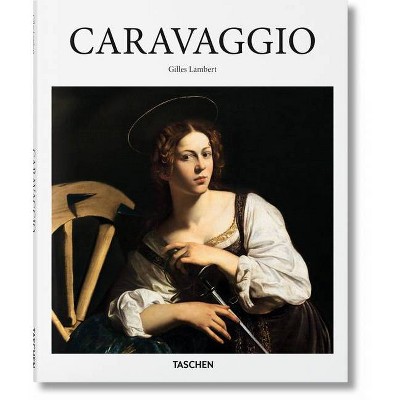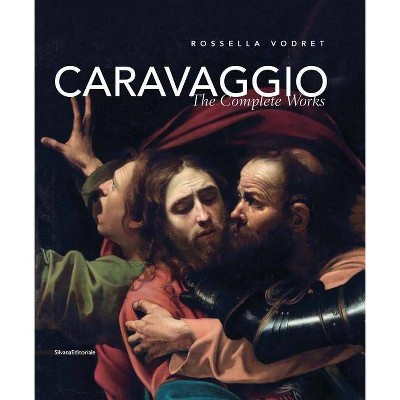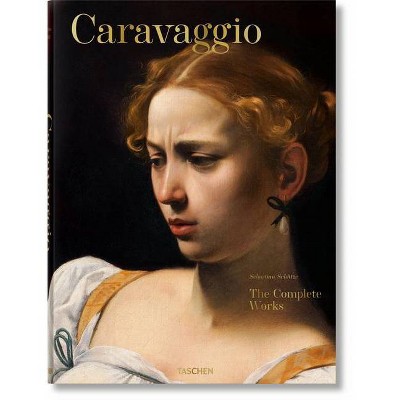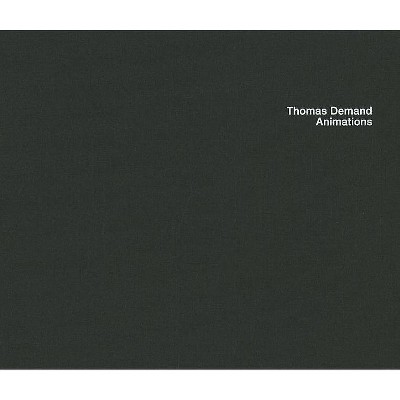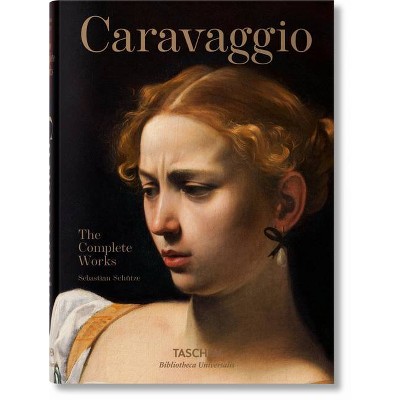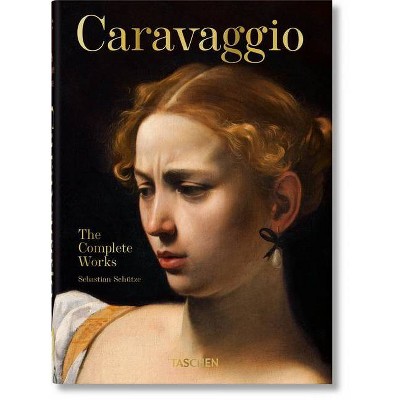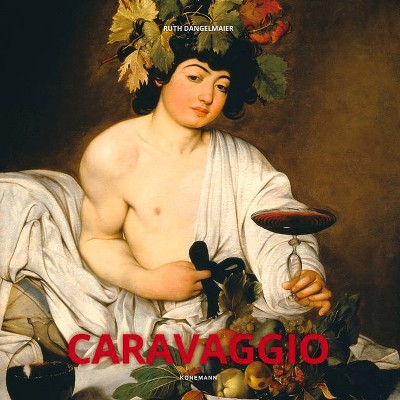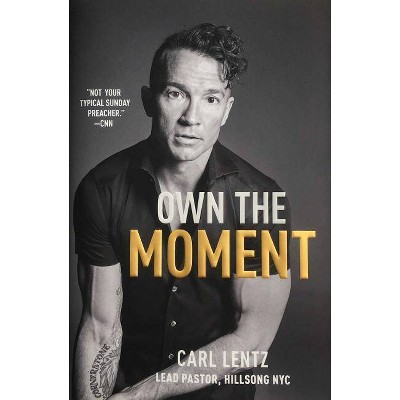The Moment of Caravaggio - by Michael Fried (Hardcover)
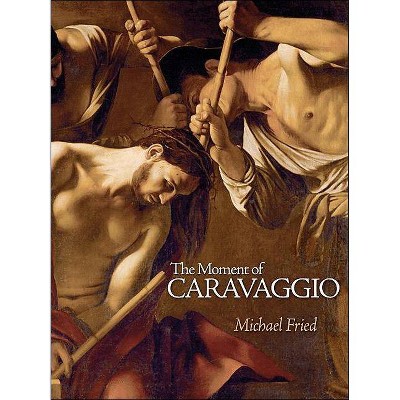
Similar Products
Products of same category from the store
AllProduct info
<p/><br></br><p><b> Book Synopsis </b></p></br></br><p><b>A richly illustrated reevaluation of Caravaggio from one of today's leading art historians</b> <p/>This is a groundbreaking examination of one of the most important artists in the Western tradition by one of the leading art historians and critics of the past half-century. In his first extended consideration of the Italian Baroque painter Michelangelo Merisi da Caravaggio (1573-1610), Michael Fried offers a transformative account of the artist's revolutionary achievement. Based on the A. W. Mellon Lectures in the Fine Arts delivered at the National Gallery of Art, <i>The Moment of Caravaggio</i> displays Fried's unique combination of interpretive brilliance, historical seriousness, and theoretical sophistication, providing sustained and unexpected readings of a wide range of major works, from the early Boy Bitten by a Lizard to the late <i>Martyrdom of Saint Ursula</i>. And with close to 200 color images, <i>The Moment of Caravaggio</i> is as richly illustrated as it is closely argued. The result is an electrifying new perspective on a crucial episode in the history of European painting. <p/>Focusing on the emergence of the full-blown gallery picture in Rome during the last decade of the sixteenth century and the first decades of the seventeenth, Fried draws forth an expansive argument, one that leads to a radically revisionist account of Caravaggio's relation to the self-portrait; of the role of extreme violence in his art, as epitomized by scenes of decapitation; and of the deep structure of his epoch-defining realism. Fried also gives considerable attention to the art of Caravaggio's great rival, Annibale Carracci, as well as to the work of Caravaggio's followers, including Orazio and Artemisia Gentileschi, Bartolomeo Manfredi, and Valentin de Boulogne.</p><p/><br></br><p><b> From the Back Cover </b></p></br></br><p>"Seldom does one encounter a profoundly surprising yet rigorously historical reading of a very familiar work; in <i>The Moment of Caravaggio</i> this happens with painting after painting. Though an account primarily of Caravaggio and his circle, Fried's discussions of address, of autonomy, of interiority, and of the <i>dispositif</i> of easel painting, among other topics, will resonate across the field. Every scholar of early modern art should read this book."<b>--Michael W. Cole, Columbia University</b></p><p>"No one sees paintings better than Michael Fried, or thinks as persistently or with such philosophical depth about such seeing, about the very possibility of pictorial meaning. <i>The Moment of Caravaggio</i> is a spectacular, compelling addition to his oeuvre. An engrossing and often simply thrilling read, the book is a triumph."<b>--Robert B. Pippin, University of Chicago</b></p><p>"This is a dazzling tour de force. Michael Fried's readings of a series of Caravaggio's most fascinating and enigmatic pictures keep one turning the pages with the greatest pleasure. Fried's arguments are compelling, muscular, and graceful."<b>--Leonard Barkan, Princeton University</b></p><p/><br></br><p><b> Review Quotes </b></p></br></br><br>[B]ased on the A. W. Mellon Lectures in Fine Arts that Mr. Fried delivered in Washington in 2004, is a knotty, episodic, infinitely erudite investigation of, among other things, the pervasiveness of violence in Caravaggio's painting.<b>---Holland Cotter, <i>New York Times</i></b><br><br>A ARTFORUM T. J. Clark Best Book of the Year for 2010<br><br>No great surprise about my book of the year. I had been waiting for Michael Fried's <i>The Moment of Caravaggio</i> (Princeton University Press) ever since hearing an early version of its opening ideas in Berkeley years ago, and when the volume arrived it took me by storm. So <i>The Moment of Caravaggio</i> stands or falls, as art history mostly should, by the intensity and detail of its accounts of specific works: by its ability to extract a painting from the ordinary round of 'formal analysis, ' iconography, and 'contextualization' and put the reader/viewer almost physically in a new kind of contact with it. This happens repeatedly in Fried's new study. The book's key analyses are beautiful and, pace the critics, often profoundly surprising. I found that as the book went on they more and more offered me a way--this is regularly the case with the arc of a Fried argument--to think about questions the author himself did not quite pose, or did not pose as I might want to. . . . In a manner typical of the writer at his best (and maybe this is what so gets up the nose of normal art history about him) his book has robbed me of the common-sensical ground on which and from which I thought I could see--could 'place'--a major artist. It made me aware of what Caravaggio's excessiveness might have been about. And it reminded me of the sheer strangeness--the preposterousness--of European painting's commitment to the real.<b>---T. J. Clark, <i>ArtForum</i></b><br><br>One of Choice's Outstanding Academic Titles for 2011<br><br>So much has been written about the High Renaissance artist Caravaggio, it is hard to believe more could be said. But the illustrious Michael Fried, of Johns Hopkins University, manages to say considerably more in his trenchant re-examination of the dynamic painter's art. . . . Fried astounds the reader with thoughts about Caravaggio's use of the mirror in art, his fascination with the 'immersive' or 'specular' moment. . . . The book is lavishly illustrated and intellectually demanding, but given the greatness of the subject and the perspicacity of the author, both are certainly to be expected.<b>---Tracey O'Shaughnessy, <i>Republican-American</i></b><br><br>Specifically, Fried's concern is with the 'coming into prominence of the autonomous and independent gallery picture in the Roman art world of the 1590s and early 1600s and the internal mechanisms by which such pictures seek 'crucially to establish the supreme fiction of ontological illusion that the beholder does not exist, that there is no one standing before the canvas'. In this context, Fried's study argues across radically different artistic periods . . . the better to construct an argument that is as big as it is granular.<b>---Angus Trumble, <i>TLS</i></b><br><br>Winner of the 2010 PROSE Award in in Art History & Criticism, Association of American Publishers<br><br>Fried is a persistent spectator, and his careful eye produces remarkable analysis that make for a thrilling read. . . . [H]is process of looking should be an inspiration to students of art history at many levels, and his observations about how viewers respond to paintings are thought-provoking. Finally, the extensive and outstanding illustrations in this handsome book are a perfect complement to Fried's interpretations.-- "Choice"<br><br>In this exquisitely illustrated volume, art historian Michael Fried binds Michelangelo Caravaggio's short life (1571-1610) and tumultuous times to the stirring innovations in his art, especially with regard to portraiture, violence and realism. With a little help from the master, Fried encapsulates Caravaggio's tempestuous personality, his place within the religious and political intrigues of the Baroque era, and his primary significance as an artist.-- "Globe & Mail"<br><p/><br></br><p><b> About the Author </b></p></br></br><b>Michael Fried</b> is the J. R. Herbert Boone Professor of Humanities and the History of Art at Johns Hopkins University. He is the author of many books, including <i>Absorption and Theatricality, Courbet's Realism, Manet's Modernism, Menzel's Realism, </i> and <i>Why Photography Matters as Art as Never Before</i>. He has also written several books of poems, most recently <i>The Next Bend in the Road</i>. In 2004, he received a Distinguished Achievement Award from the Andrew W. Mellon Foundation
Price History
Cheapest price in the interval: 38.99 on November 8, 2021
Most expensive price in the interval: 38.99 on December 20, 2021
Price Archive shows prices from various stores, lets you see history and find the cheapest. There is no actual sale on the website. For all support, inquiry and suggestion messagescommunication@pricearchive.us
